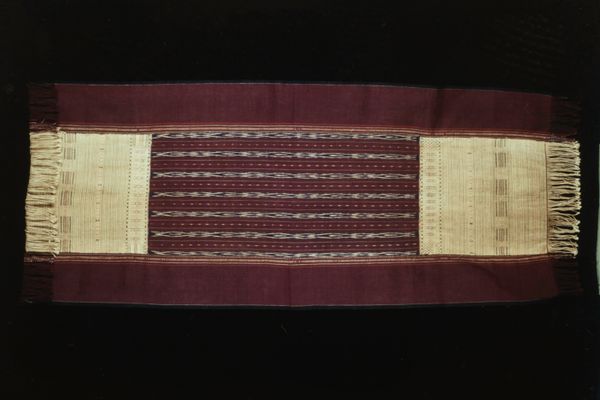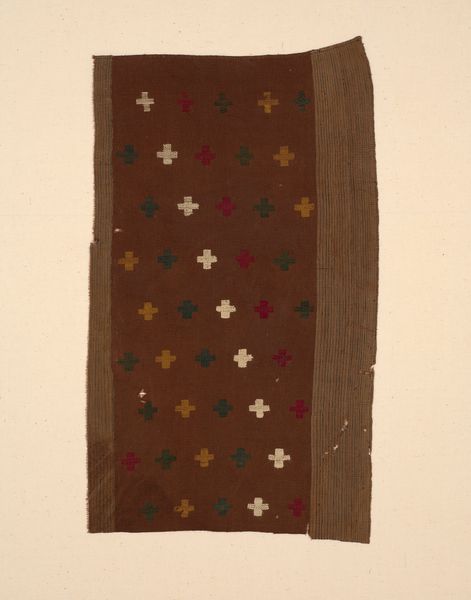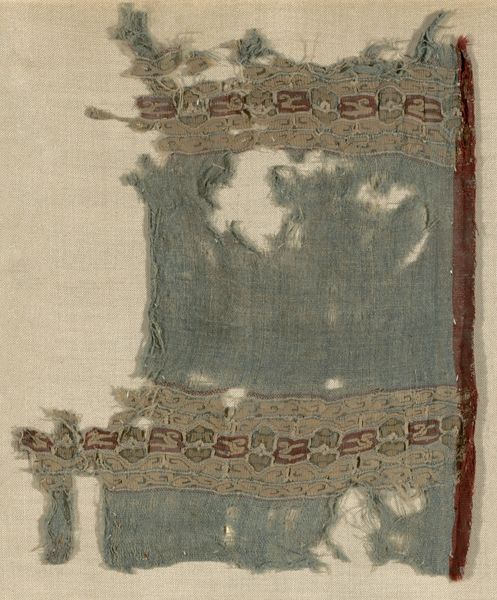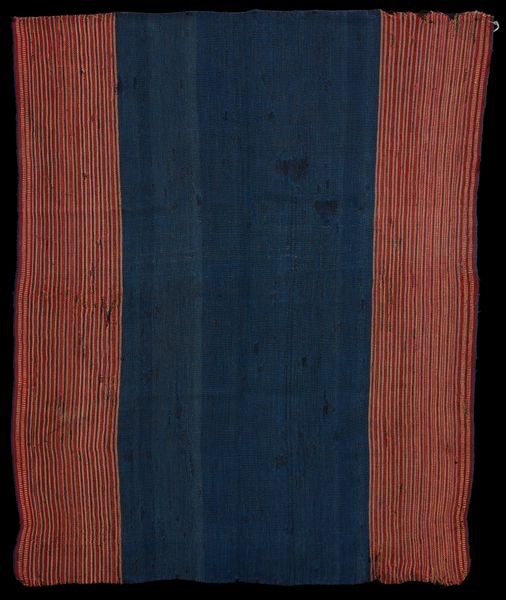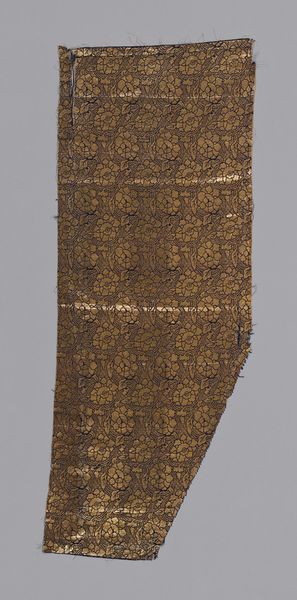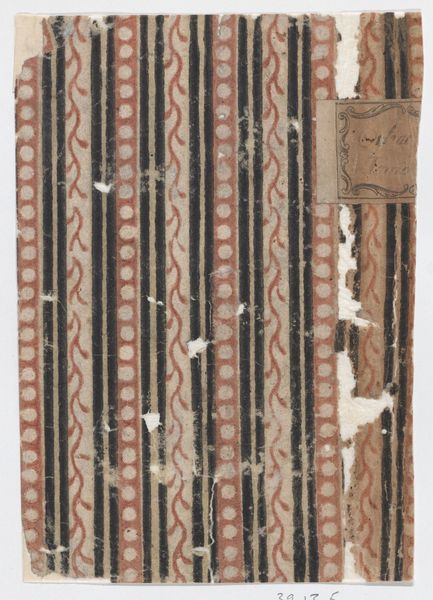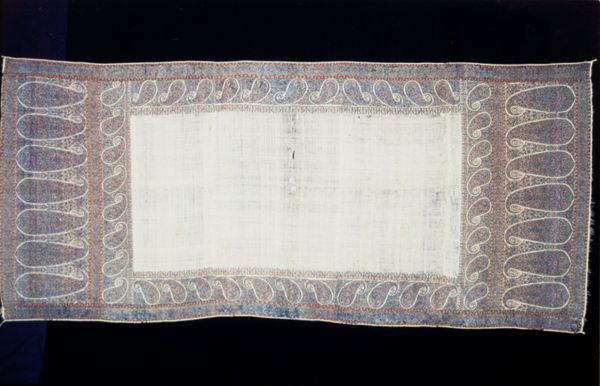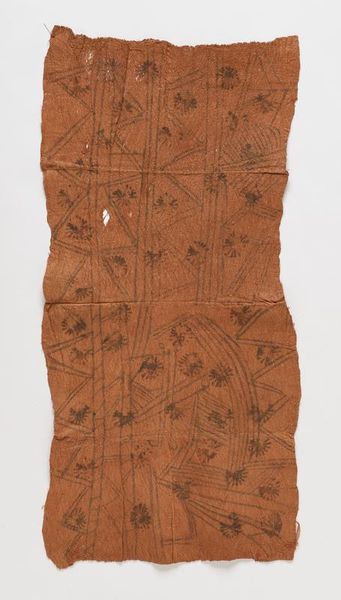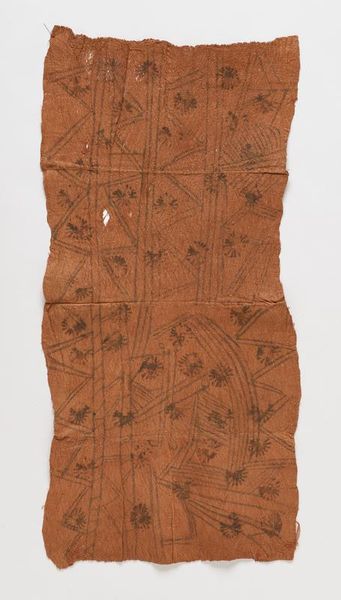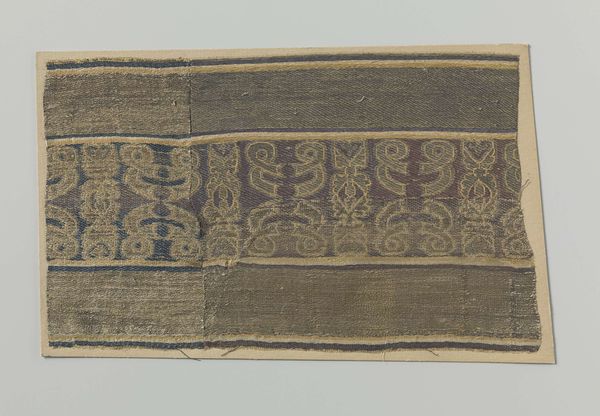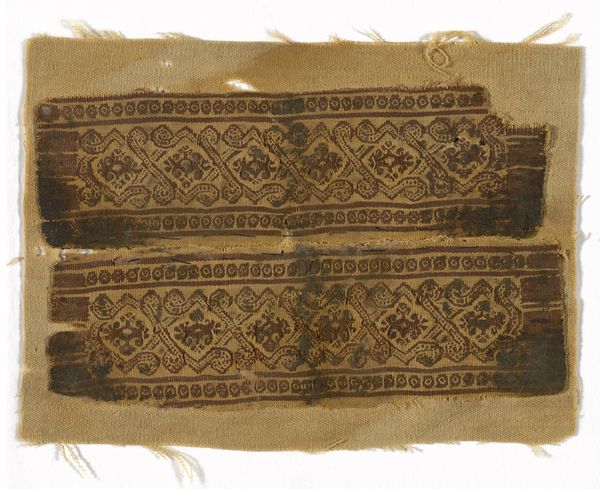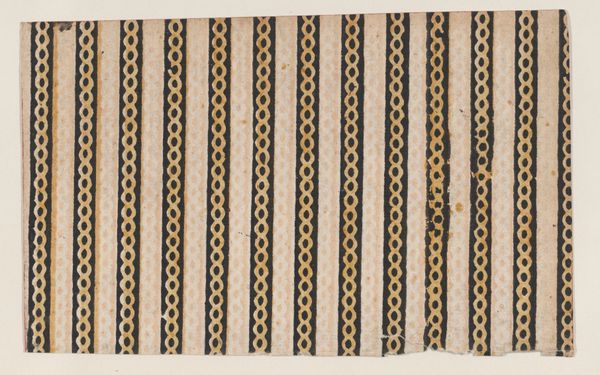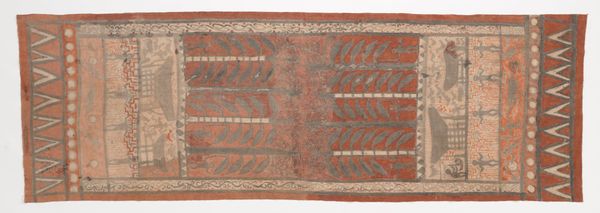
Fragment Arab period (641–969)/Fatimid period (969–1171)/Ayyubid period (1171–1250)/ Mamluk period (1250–1517), 9th/13th century
0:00
0:00
weaving, textile
#
weaving
#
textile
#
geometric
#
islamic-art
Dimensions: 27.9 × 19.1 cm (11 × 7 1/2 in.)
Copyright: Public Domain
Editor: We're looking at a textile fragment here, simply titled "Fragment," dated somewhere between the 9th and 13th centuries and originating from the Arab, Fatimid, Ayyubid, or Mamluk periods. It's currently held at The Art Institute of Chicago. It’s striking, with its muted colours and varied stripe patterns... What story do you think this fragment whispers? Curator: The fragmentation is really key, isn't it? It prompts us to think about the lives and cultural practices surrounding this textile. Where do you imagine it originally belonged? Was it part of clothing, or perhaps a larger furnishing? Editor: It’s hard to tell given its condition! It could’ve been anything from clothing to decoration, honestly. Curator: Precisely. Considering its age, it makes me reflect on its journey through trade routes and across cultures. The geometric patterns, characteristic of Islamic art, intertwine with other traditions prevalent in that period and geographic region. What does that juxtaposition say about the social fabric of the time? Editor: That it wasn't monolithic? That various cultures influenced each other, resulting in a complex shared identity? Curator: Absolutely! And what about the muted tones? Perhaps they tell a story of the available dyes, the climate... but perhaps it’s also because time affects colors, or simply speaks to a design aesthetic of that historical period, influencing social and religious implications? How can we unravel those layers? Editor: So it's not just an object; it’s an echo of lives lived, influenced by socio-economic factors. I never really considered how complex studying a single fragment could be! Curator: Indeed. And by contemplating those lives, we might also come to new understandings of our own relationship with the present. It shows us the interconnectedness of history and identity.
Comments
No comments
Be the first to comment and join the conversation on the ultimate creative platform.
